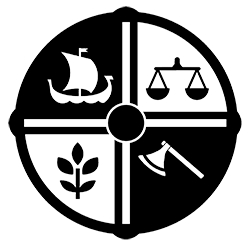Making a Warrior brings together an interdisciplinary, pan-Nordic network of mid- and early career researchers to examine a topic of high academic and cultural interest, namely that of the Viking Age warrior.
The Viking warrior dominates both academic discourse and popular perceptions pertaining to the period. Stories about the Viking Age often highlight raiding, warfare and aggressive expansion tactics, and results in a view of the period as being characterised by violence. Though such stories do rest on a certain basis in truth, they nevertheless ignore the wider societal aspects of what is required to support ideologies of violence and warfare. To address this, we will initiate a critical reappraisal and redefinition of warriorhood in Viking Age Scandinavia.
The basis for our project lies in the belief that warriorhood was a dynamic and multifaceted institution, that found expression not only in violence but also in various socio-political and ritual contexts. The persona of the warrior therefore was enacted both on and off the battlefield, and by a variety of people in different ways. Crucially, we believe that to understand the impact of a martial ideology, we need to situate warrior groups in a wider cultural context, and to understand the interrelationship between a martial ideology, daily life and social interaction and warrior groups.
Our approach employs a methodology of applied theory across disciplines and work packages to bring together complex topics into cohesive studies.
We rely on theoretical concepts of personhood, intersectionality, cultural memory, conflict studies and cognitive science perspectives to address questions such as how martial identities were expressed and understood in different contexts, how the internal structures of warrior groups affected their relationship with their wider social contexts, and how the interplay between martial ideologies and daily life worked to support and underpin each other.
Throughout the project we are also mindful of the public interest in the Viking Age as cultural heritage, and seek to engage with this through a targeted work package that examines cultural heritage dimensions of research on the past.
Project organisation
This is a network project with partners from the University of Iceland, the University of Uppsala in Sweden, the National Museum in Denmark and the Museum of Cultural History in Norway. In addition to research funds, the project also includes funds for network building and a two-year postdoctoral position to be announced.
The project is organised into four work packages, each to be led by a different member of the core research group, but each designed to engage research expertise from the complete group. The core research group consists of four researchers: Marianne Moen from the Museum of Cultural History, University of Oslo, Benjamin Raffield from the University of Uppsala, Sophie Bønding from the National Museum of Denmark and Declan Taggart from the University of Iceland.
We have identified two core areas in need of further study if we are to broaden our understanding of Viking Age warriors and society. One is the need to situate warrior groups with a wider social and cultural setting. Warriors are often treated as a group somewhat apart from the society in which they lived of which they were, presumably, an integral part. We seek here to contextualise these identities both into a wider cultural setting, but equally to contextualise the wider setting into the creation of martial identities.
The second area is the question of who we envisage as being a warrior. Here we seek to move beyond the entrenched idea of aggression and violence as natural male characteristics. We therefore seek to break with a centuries old and established model and instead foster a nuanced understanding of what a warrior was, and who could inhabit and own the characteristics associated with this role.
Work packages
First work package: Defining warrior groups
Our first work package seeks to define warrior groups, but examining the ways in which complex intra-group identities and relationships were managed among warrior groups, and how warrior identities – both idealised and actual – were expressed and understood. In this work package we seek to broaden our understanding of warrior identities, and to contextualise these within the bonds of belonging that were forged, negotiated and sustained within and without martial groups.
Second work package: Warrior groups hierarchies
Our second work package seeks to understand the internal hierarchies of warrior groups. In this, we deconstruct the ways in which the identity of the warrior was conceptualised, idealised and propagated during the Viking Age, and how the cultural package of materials and traditions used to reinforce this varied across Scandinavia. It also questions how access to these identities and their associated material culture was restricted in order to consolidate power and social positions.
Third work package: Martial ideologies
In our third work package, we contextualise martial ideologies in Scandinavian communities. Here we examine the functional and intentionally manufactured aspects of warriorhood during the Viking Age, focusing especially on intersections of gendered identities and power and examining notions of personhood.
Fourth work package: Changing perceptions
Finally, our fourth work package seeks to change perceptions by operating in the intersection of public engagement and academic knowledge production. We here ask questions of how academic knowledge is disseminating, to who, and what reception and understanding this engenders. Acknowledging the Viking Age and its power to fascinate, we seek here to refine current approaches to dissemination by examining what kind of research results tend to garner high degrees of public interest, and how this in turn may shape academic projects.
Funding
Nordforsk has allocated just under NOK 7.5 million to the research project.

